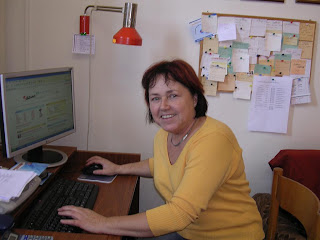


“Amazing Europe” is a Comenius project by which participant schools aim to promote European Citizenship. Teachers, students, schools and local communities from Check Republic, England, France, Italy, Lithuania, Netherlands, Poland, Portugal, Romania, Slovenia, Spain and Slovakia, together, aim to create a United and Amazing Europe!...





Since 1985 our school has been devoted to the professional training in different specialities of students from our county and the neighbourghood. When the new Education Law Act, called (LOGSE) passed in 1985, new changes took place and one of those made our school become also a Secondary Education School called Institut d’Educació Secundària (IES). We have been teaching Compulsory Education between 12 and 16 years old, called (Educació Secundària Obligatòria, ESO) and Further Education 16 – 18 and 18 - 20 since the academic course 1995-96.
When our school started its activity as a “Secció de FP” there were 44 students registered; the number of students was increasing up to 424 in the academic year 1993-94. After LOGSE started the enrolment of students decreased until about 350. Nowadays and as a result of the new Vocational Studies and the rise of population in Cervera our school has a number of 485 students registered.
The students taking part in the Comenius Project 2008-2010 are in their 2nd, 3rd and 4th year of Compulsory Education (13–16 years old).








“Mihai Eminescu” National College-Botosani
At the end of 19th century, Botosani had a prosperous economic life, with a strong middle-class, whose desire was to have their children highly educated. The same demand came from the rural area, too, maybe because of the temporary economic development. The intellectuals of the town took advantage of any occasion to insist on founding a high-school for girls. Eventually, on 4th of September 1887, Spiru C. Haret, the minister of education, signed the Order nr.11983, which was the “birth certificate” for the Secondary School for Girls from Botosani.
The first location of the school was at “Vasilievici House”, with furniture borrowed from “A.T.Laurian” High-school. The first principal was a woman teacher –Eugenia Savinescu– who also taught French language. An interesting fact was the nomination of Virginia Micle –Veronica Micle’s daughter– as a teacher of Mathematics and Science.
From the very beginning, the school was supervised by the Ministry of Education. Thus, there were sent university professors from
Unfortunately, the school confronted to the problem of the location. In 1904, it functioned in “Manoli Houses”, then in “Vasescu Houses” and later in the building belonging to “The Romanian Women” Association. There was not possible to build a special location for this school because of the lack of financial support. Only in 1962, there was built the institution where there is School no.11 now, and where the High-school functioned until 1972, when it was moved to a totally new modern location.
The High-School for Girls from Botosani got the official name “Carmen Silva” in 1928. Between the wars, the institution organized numerous educational activities and collaborated with various charitable organizations from the town, in order to help the poor students. During the Second World War, the students who were refugees were offered free accommodation, and the necessary funds for continuing their studies.
The consequences of those two World Wars, of the Dictate from Viena and of the Treaty Ribbentrop-Molotov are felt by “Carmen Silva” High-School, too. Thus, a great part of the correspondence with the School Inspectorate from
During the period: 5th of March–17th of April 1944, the Russian troops invaded the Romanian territory, our town being the first one. The high-school was evacuated in a haste, leaving behind many valuable things: furniture, library, original paintings, crystal mirrors, laboratory equipment etc. The institution was moved to Cermei locality, in
Finally, after many hardships and risks, the institution managed to return on 6th of April 1945.
Unfortunately more problems were to come. The new politics dictated by the
Moreover, the managing staff of the school was forced to give up to many valuable literary works written by Mihai Eminescu, Nicolae Iorga, Ion Antonescu etc., the students being obliged to read new books, such as: “Zoe Kosmodemianskaia” by N. Matrosov, “The Living Factory” by Vasile Roaita etc.
In 1948, “Carmen Silva” High-School was changed into School no.2 and only in 1957 the institution was given the name of our national poet: “Mihai Eminescu”.
During the period 1948-1968, this institution made a considerable progress regarding both the number of students and of the teachers, as well as the diversity of the profiles.
In 1982, the high-school had the honour of organizing the Romanian Literature National Contest, the President of the Evaluation Committee being the famous literary critic Zoe Dumitrescu-Busulenga. Her impressions were: ”I have lived some remarkable days at this high-school which has the name of a star; we have enjoyed the beauty, the peace and the high discipline that dominate in here. I believe that the success of this Contest is due to the special atmosphere created by both the principal of the school (Vasile Pricopie) and the entire teaching staff. I promise to return here as a simple traveler”.
“Mihai Eminescu” High-School repeated its role as a host for the Romanian Literature National Contest in 1987, 2005.
1987 was also the year of celebrating the centenary of the high-school.
In 2002, the institution got the status of
